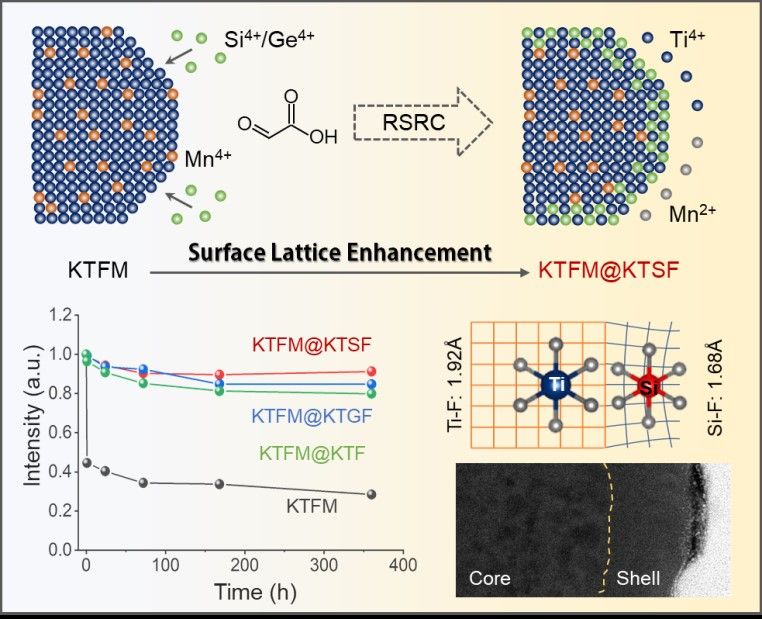The poor moisture resistance of Mn4+-activated fluoride red phosphors restricts their practical applications. Herein, this work proposes the embedment of small radius cations (Si4+ or Ge4+) into the inert shell (K2TiF6) constructed on the surface of K2TiF6:Mn4+ particles, which increases the covalence of the surface lattice and thus leads to a significant improvement of the stability of the fluoride. By using multidimensional microstructural characterization techniques, we confirmed the construction of a heterogeneous shell (K2Ti1−xSixF6 and K2Ti1−yGeyF6) and systematically investigated the construction process. Compared to the untreated K2TiF6:Mn4+, the external quantum efficiencies of the K2TiF6:Mn4+@K2Ti1−xSixF6 and K2TiF6:Mn4+@K2Ti1−yGeyF6 heterogeneous core–shell particles improved by 2–3%, and 99% and 88% of the initial luminescence intensity were maintained after boiling in water for 50 min, respectively, which are significantly better than that (25%) of the homogeneous K2TiF6:Mn4+@K2TiF6. The aging of red and white light-emitting diode devices at a high temperature (85 °C) and a high humidity (85%) shows that the heterogeneous core–shell structures have higher stability than their homogeneous counterparts. The surface lattice enhancement strategy proposed in this work is useful as a reference for improving the properties of other under-stable materials.

第一作者:万萍萍
通讯作者:周文理
发表期刊:Inorganic Chemistry Frontiers
发表时间:2023-07-13
文章链接:https://pubs.rsc.org/en/content/articlelanding/2023/qi/d3qi01088k/
